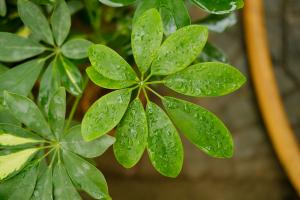How to Fertilize Outdoor Potted Plants
Outdoor potted plants are a great way to beautify any space. Whether you have a balcony, deck, or backyard, potted plants can add color and freshness to your surroundings. However, to keep your plants healthy and thriving, they must receive proper care, including regular fertilization. In this article, we will take you step by step through the process of fertilizing your outdoor potted plants.
Choose the Right Fertilizer
The first step in fertilizing your potted plants is to choose the right fertilizer. Not all fertilizers are created equal, and different plants have different nutrient requirements. For outdoor potted plants, you should choose a slow-release fertilizer that contains balanced nutrients, such as 10-10-10 or 14-14-14. You can find fertilizers at most garden centers and nurseries.
Apply Fertilizer at the Right Time
Once you have your fertilizer, you need to apply it at the right time. The best time to fertilize your outdoor potted plants is in the spring, as they start to grow again. You can apply fertilizer again in midsummer to give your plants a boost. However, be careful not to over-fertilize your plants, as this can damage their roots and burn their foliage.
Water Before Fertilizing
Before applying fertilizer, make sure your potted plants are well-watered. A good rule of thumb is to water your plants the day before you plan to fertilize them. This will ensure that the fertilizer is evenly distributed throughout the soil and that all of the roots receive the nutrients they need.
Measure and Apply Fertilizer
The next step is to measure and apply the fertilizer. Follow the instructions on the fertilizer package to determine the amount you need to use. A general rule is to use one tablespoon of fertilizer per gallon of soil. Be sure to spread the fertilizer evenly over the soil surface and avoid getting it on the plant foliage or stems.
Water After Fertilizing
After applying fertilizer, water your potted plants thoroughly. This will help to distribute the nutrients throughout the soil and prevent the fertilizer from burning the roots. Watering also helps to flush out any excess fertilizer that may have accumulated on the soil surface.
Monitor Growth and Adjust Fertilization
Finally, monitor the growth of your outdoor potted plants and adjust fertilization as needed. If your plants are not growing as vigorously as they should, they may need more fertilizer. On the other hand, if your plants are growing too quickly and producing fewer flowers, they may be getting too much fertilizer. By monitoring your potted plant growth and adjusting fertilization accordingly, you can ensure that your plants thrive and look their best.
Conclusion
Fertilizing your outdoor potted plants is an essential part of plant care. By choosing the right fertilizer, applying it at the right time, and watering before and after, you can keep your plants healthy and beautiful. As always, be sure to monitor your plant growth and adjust fertilization as needed to ensure they receive the proper nutrients for optimal growth. Happy gardening!

 how many times do yo...
how many times do yo... how many planted tre...
how many planted tre... how many pine trees ...
how many pine trees ... how many pecan trees...
how many pecan trees... how many plants comp...
how many plants comp... how many plants can ...
how many plants can ... how many plants and ...
how many plants and ... how many pepper plan...
how many pepper plan...





























